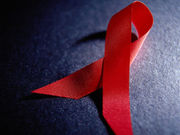Diagnoses among black and Hispanic gay, bisexual men rose in past decade
MONDAY, Dec. 7, 2015 (HealthDay News) — The number of Americans diagnosed with HIV each year declined by about one-fifth during the past decade, but not all groups saw reductions in prevalence, according to research presented at the National HIV Prevention Conference, held from Dec. 6 to 9 in Atlanta.
Between 2005 and 2014, the overall annual number of HIV diagnoses fell 19 percent — from 48,795 to 39,718 a year. The decrease was led by a 63 percent decline among injection drug users, a 42 percent drop among black women, and a 35 percent decrease among heterosexuals. However, annual HIV diagnoses among gay and bisexual men rose about 6 percent during the study period, from 25,155 to 26,612 a year, although they recently stabilized at less than a 1 percent increase a year.
The increase in HIV diagnoses among gay and bisexual men was driven largely by blacks and Hispanics. HIV diagnoses among white gay and bisexual men fell 18 percent, from 9,966 to 8,207 a year. But diagnoses rose 22 percent among black gay and bisexual men, from 8,235 to 10,080 a year, and rose 87 percent among black gay and bisexual men aged 13 to 24, from 2,094 to 3,923 a year. Among Hispanic gay and bisexual men, HIV diagnoses rose 24 percent during the study period, from 5,492 to 6,829 a year.
In recent years, diagnoses rates fell 2 percent among young black and gay bisexual men, the study authors said. “Although we are encouraged by the recent slowing of the epidemic among black gay and bisexual men — especially young men — they continue to face a disproportionately high HIV burden and we must address it,” Jonathan Mermin, M.D., director of the CDC’s National Center for HIV/AIDS, Viral Hepatitis, STD, and TB Prevention, said in an agency news release.
Copyright © 2015 HealthDay. All rights reserved.








